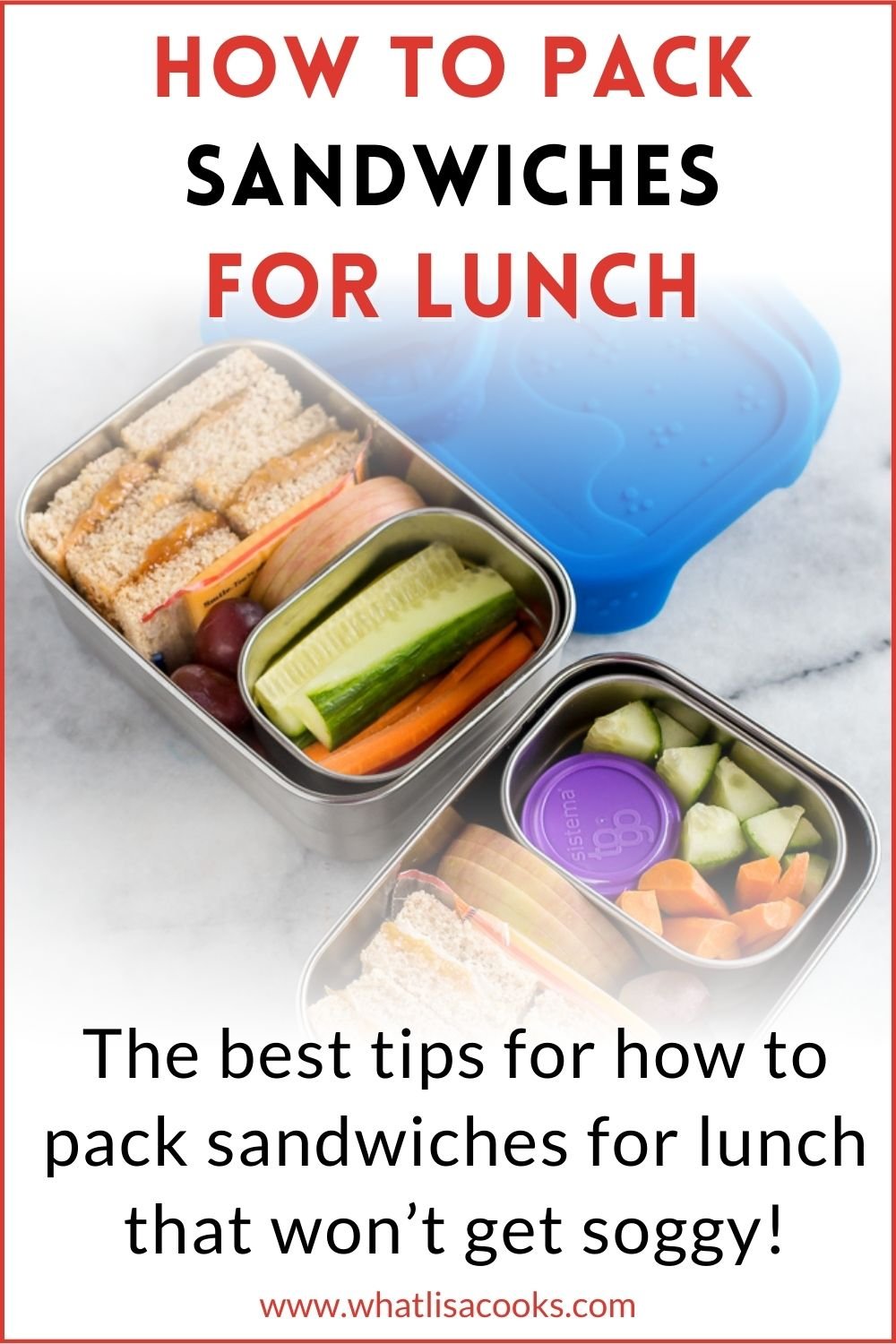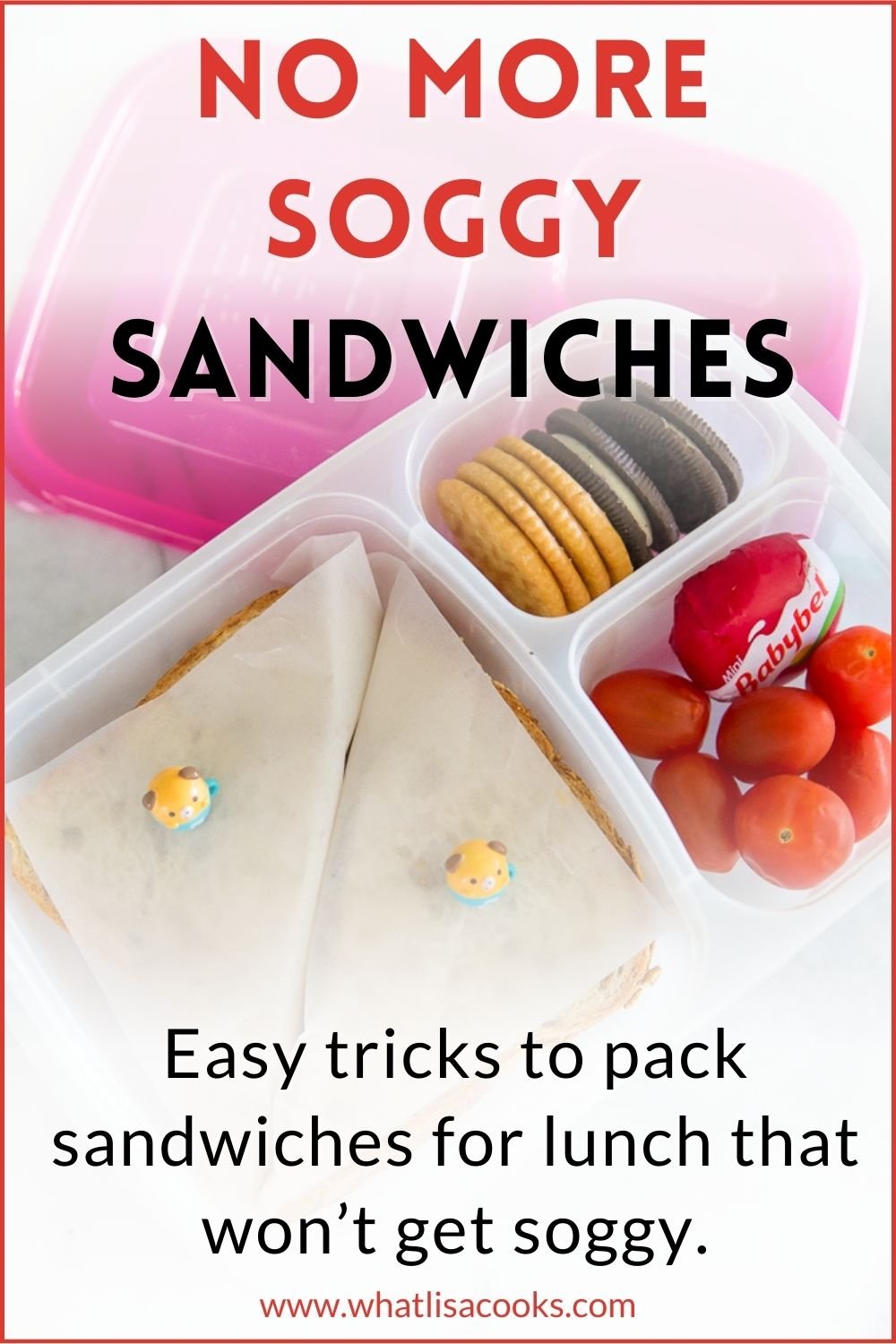How to Pack Sandwiches ahead of time
How to pack a sandwich for lunch without it getting soggy.
One of my top tips for back to school lunch packing is to make lunch ahead of time. It’s the number one thing that I recommend to relieve stress on school day mornings - if those lunches are already packed and all you have to do is grab them out of the fridge.
I’ve got a whole post with all of my tips for successfully packing lunch ahead of time that you should definitely read and save. But I get a lot of questions specifically about how to make sandwiches ahead without them getting soggy so that’s what this post is all about!
Nobody likes a soggy sandwich, and especially if you have kids who are a little sensitive about the texture or consistency of food, you need to figure out ways to pack a sandwich for school lunch and keep it fresh. The good news is that this is actually pretty easy to do, once you know a few simple tricks.
A lot of folks have questions about how to pack a sandwich for lunch so it doesn’t get soggy. My tips below for packing sandwiches will help! I’m going to tell you all of my easy tricks to keep lunch sandwiches from getting soggy!
How to pack sandwiches ahead of time.
Most of our lunches are not sandwiches, and my most popular posts about lunches are the ones about no sandwich lunches. But let’s be honest, sandwiches sometimes are the easiest and quickest thing to make, and some of us really do love them. Personally I’ve hardly ever met a sandwich I didn’t like.
So if you do want to pack a sandwich for lunch, and you want to save yourself the time and stress on school day mornings, I have some great tips for you about how to pack sandwiches ahead of time. The biggest concern is the sandwich getting soggy, so most of these tips are about little changes you can make to how you assemble the sandwich to ensure that it stays just as fresh tomorrow or the next days as it was when you packed it.
Here are my top tips for packing sandwiches in advance.
Keep reading for more detail about each of these!
1) Avoid wet ingredients
2) Seal the bread with something
3) Meat in the middle
4) Use the freshest meat possible
5) Use bread that is more dense or dry
6) Pack a deconstructed - or “make your own” sandwich box
7) Jam in the middle
8) Toast or grill the bread
Read on for all the detail about each of these tips for packing sandwiches ahead of time.
1) Avoid wet ingredients
Give a little thought about what sandwich ingredients are the biggest contributors to making them soggy, and just switch those out. Leave out the lettuce or tomato or cucumber, or other similar veggies that are going to release a lot of moisture. If you really want veggies for your sandwich, keep them separate and add them to the sandwich right before eating.
If you’re just packing the night before and not days ahead, I’ve had good luck with putting the lettuce and tomato in the middle of the sandwich so it’s just not touching the bread. You can also try blotting the veggies with a paper towel to absorb some of that extra moisture before putting them in the lunch box.
2) Seal your bread with something
I usually have no problem with mayonnaise making bread soggy. I know some people say they do. I wonder if they’re using light or reduced fat mayo, that may contain more water? Regular mayo is mostly oil, so there shouldn’t much moisture or water in there to make bread soggy.
If that still doesn’t work for you, try a thin layer of butter on the bread to seal it, then your other spreads or toppings. Or some people have good luck with leaving out the spread and packing it separately, and then adding it at the last minute. There are great little containers available that hold just the right amount of mayo for a sandwich.
3) Meat in the middle.
Some people feel that sliced lunchmeat makes their bread soggy. So try putting the meat in the middle of the sandwich, rather than right next to the bread. Put slices of cheese on either side touching the bread. Or you can dry the meat a little with a paper towel before you put it on the bread.
4) Use the freshest sliced lunchmeat possible.
I find that pre-packaged sandwich meat often has a lot of water added to it, and it’s almost drippy when take it out of the package. But if you get freshly sliced meats from the deli they don’t have as much water added and they work much better for making sandwiches ahead. If you buy packaged sliced meat, check the label to see if it has water or “a solution” added.
5) Use a more dense, dry bread.
That wonderful soft, white sandwich bread that we all love is just too delicate to hold up to packing in advance. It absorbs moisture too easily, and it also starts out more moist than a lot of bread. Instead try a more dense bread - a multigrain, or at least a whole wheat bread (but not one that's too soft), or a good firm and chewy sourdough. We also love bagel sandwiches, and most bagels hold up really well to packing ahead of time. I’ve got a fun post here about how to make this simple bagel sandwich lunch.
Bagel sandwiches are one of our favorites and the bagels hold up very well to packing in advance. You can find these lunchboxes and cute little picks in my Amazon Store.
6) Try packing a “make your own” sandwich box.
This is actually one of my kids favorite lunches. It’s an easy way to make sandwiches more fun. Pack pieces of bread, sliced meats and cheese, sliced veggies, mayo, all in separate containers or separate sections of the lunch box so none of the components are touching each other. Then they get to assemble their own sandwich at lunch time. Bento lunch boxes with silicone dividers are perfect for this kind of lunch.
Make your own sandwich kit, with bread, cheese, ham, and one has peanut butter. Applesauce, tomatoes, cookies, and a plum on the side.
7) Jam in the middle
If you are making PB&Js, you might try rearranging your usual method. Try putting a layer of peanut butter on both pieces of bread, and then the jam in the middle. You can also try adding a thin layer of butter to the bread if you really don’t want peanut butter on both sides.
Use jam instead of jelly. A lot of folks don’t know the difference and assume they are different names for the same thing. They are not. Jelly is made from just the juice, so by nature it is much wetter. Jam on the other hand is made from the whole fruit, usually with the pulp and skin, so it’s thicker and there is less moisture to soak into your bread. I always use only jam, never jelly.
8) Toast or grill sandwiches.
Toast the bread before making the sandwich, or make a toasted or grilled sandwich. Just toasting the bread only takes a few extra minutes but it gets you started off with bread that is a little more dry. If you make a grilled sandwich we usually do those with butter or oil or mayo, and that will help crisp up and seal the bread even more. And of course melted cheese helps keep it all together without getting soggy. I make all kinds of grilled sandwiches ahead of time - grilled cheese, tuna melts, grilled ham and cheese, etc. If your family loves tuna melts as much as mine does, you’ll definitely want to try my tip for the best tuna melts.
Toasted cheese sandwiches work great when made ahead.
Finally, as I also say in my full post about packing lunch ahead of time:
Adjust your expectations, and just give it a try.
There are lots of things that are going to work for packing ahead of time, and some things that won’t. I think packing lunch ahead of time is such a great time saver and stress reliever that it’s worth a few tradeoffs. But you are going to just have try a few different ways of doing things and see what works for you to pack a sandwich for lunch that won’t get soggy.





